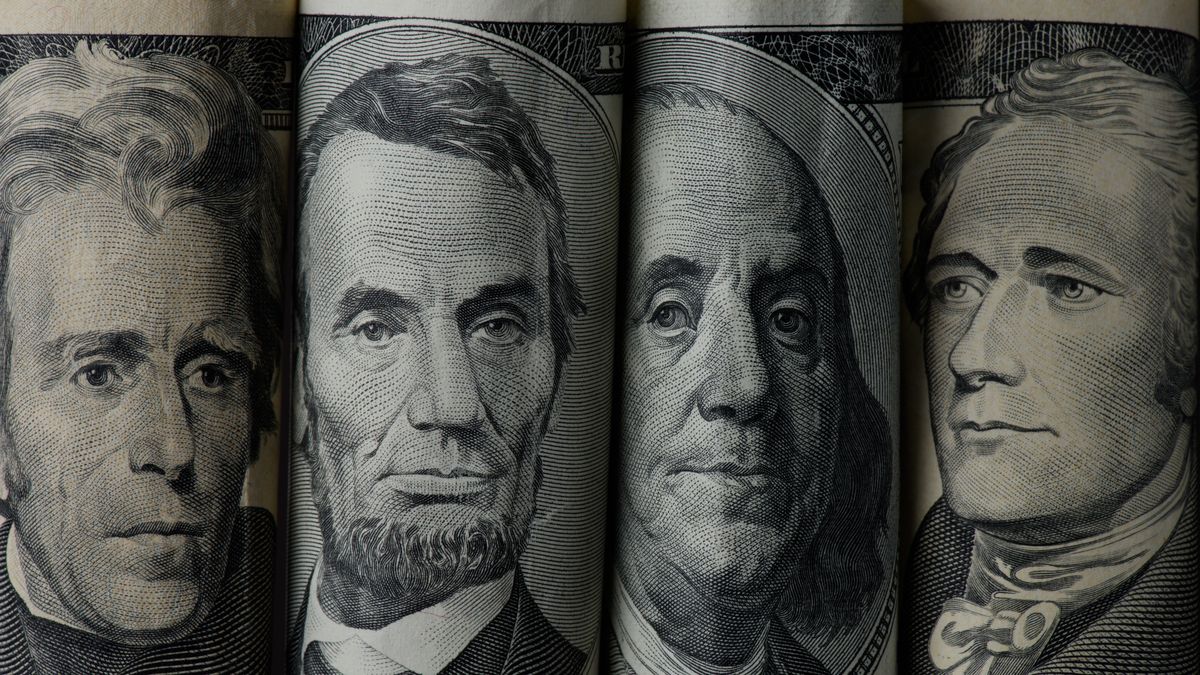“In the year, the official dollar nominally advanced 72% against local inflation which would exceed 95% comfortably. Specifically, the real multilateral exchange rate (that is, a calculation that not only considers local inflation and the advance of the wholesale dollar, but also what happens to the currencies of our main trading partners and their respective inflation rates) appreciated by 10%. in 2022”, the Invecq economist Juan Pablo Albornoz details the evolution of the official dollar.
This was the evolution of the official dollar in 2022
And he points out that, unlike 2021 where the appreciation of the exchange rate was conditioned by the acceleration of inflationbut also due to an economic policy decision to step on the official to minimally calm the evolution of prices in the economy, in 2022, the Central Bank began a gradual accelerating rate of depreciation. It took it to close to 7%, very close to the inflation levels of September, October and November (around 6%).
“However, this trend was interrupted in mid-December, when inflation marked several consecutive months of deceleration,” Albornoz describes. Thus, the officer ends the year running at around 6% monthly cash, when in the first months of the year it was around 2-3%.
The economist Federico Glustein indicates that “the official dollar ends 2022 depreciated by 25 percentage points compared to inflation” and points out that this was mainly reflected in the different government measures tending to microdevalue by sector: “The official remained behind, but updates were applied to different export segments. It was necessary to take measures such as the soybean dollar I and II, among which US$11,000 million were acquired to meet the demand for foreign currency”, Glustein describes.
As detailed by the economist from Equilibra, Lorenzo Sigaut Gravina, the soybean dollar 1 brought forward exports from the last four-month period of the year to September. This increased the collection by valuing the sales at an exchange rate of $200. “The difference with the official dollar was subsidized by the Treasury, but it was recorded as “below the line”, so it did not impact the fiscal goal,” he explains. “The important thing was to accumulate reserves to reach almost US$44,000 million and have more back to face upcoming obligations and avoid big runs”, says Glustein.
Cabinet changes a shock to the dollar
Big bullfights like the one that occurred with the surprise departure of the Minister of Economy, Martín Guzmán, who left his post in July, and that caused the dollar markets to jump, which skyrocketed. The exchange rate tension continued for several days. It even intensified with the arrival of Silvina Batakis as his replacement.
In her 25 days in office, the minister implemented the first differentiated exchange rate for the soybean sector, which was the famous 70/30 that the BCRA applied with the intention of increasing the entry of dollars to the reserves, but it was not very successful. .
Finally, the arrival of Sergio Massa was well received by the markets, and exchange rates entered a pax cambiaria for a few weeks. “The arrival of Massa gave vigor to this accumulation of foreign currency. He was the only official with a program oriented to comply with the Fund, which requires accumulating dollars to avoid defaults, ”according to Glustein.
P6 – Massa (NA)_opt.jpeg
Massa’s arrival at the Ministry marked a change in the reserve accumulation policy.
The Massa Plan: the central axes to attract dollars
And it is that Massa it established a reserve recovery plan, within the framework of which it launched the soybean dollar. In addition, the execution of disbursements for US$1.200 million by international organizations was agreed, which the Government has been insisting to finish specifying. And, on the other hand, work was done on the implementation of a traceability system for foreign trade with the idea of having greater control and transparency in the use of foreign currency for imports. This plan materialized with the implementation of the Import System of the Argentine Republic (SIRA) to replace the SIMI.
His policy made devaluation pressures subsided or they will be postponed, at least and, on the other hand, international reserves will close the year at US$ 44,588 million. Since they started 2022 at US$39,582 million, they increased throughout 2022 by US$5,006 million, according to official sources.
The export incentive programs (PIE I and II) were key in this regard. Albornoz considers that there is a clear problem with the level of the exchange rate and that this is evidenced by the fact that “reserves could only be accumulated on a sustained basis when an exchange rate substantially higher than the official one was validated.” However, everything would indicate that the Government plans to continue on the current path in this regard because it considers that the social and political cost of a sudden devaluation would be unacceptable, especially in 2023, which is an election year.
Source: Ambito
David William is a talented author who has made a name for himself in the world of writing. He is a professional author who writes on a wide range of topics, from general interest to opinion news. David is currently working as a writer at 24 hours worlds where he brings his unique perspective and in-depth research to his articles, making them both informative and engaging.




